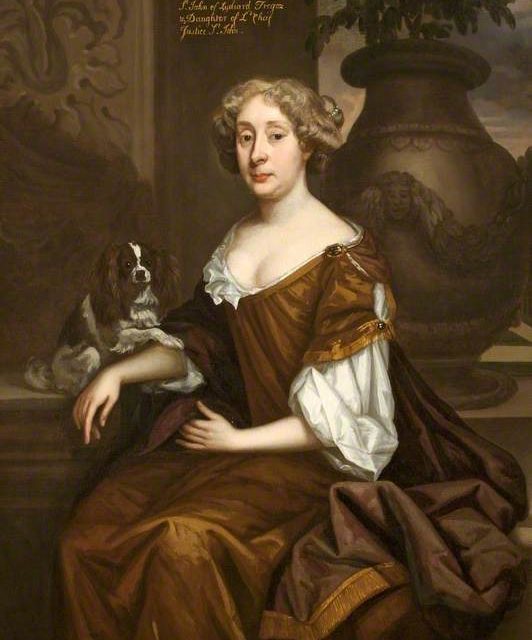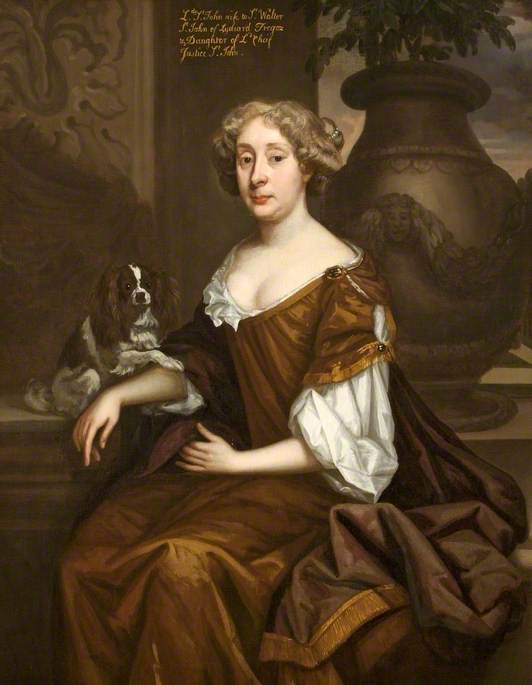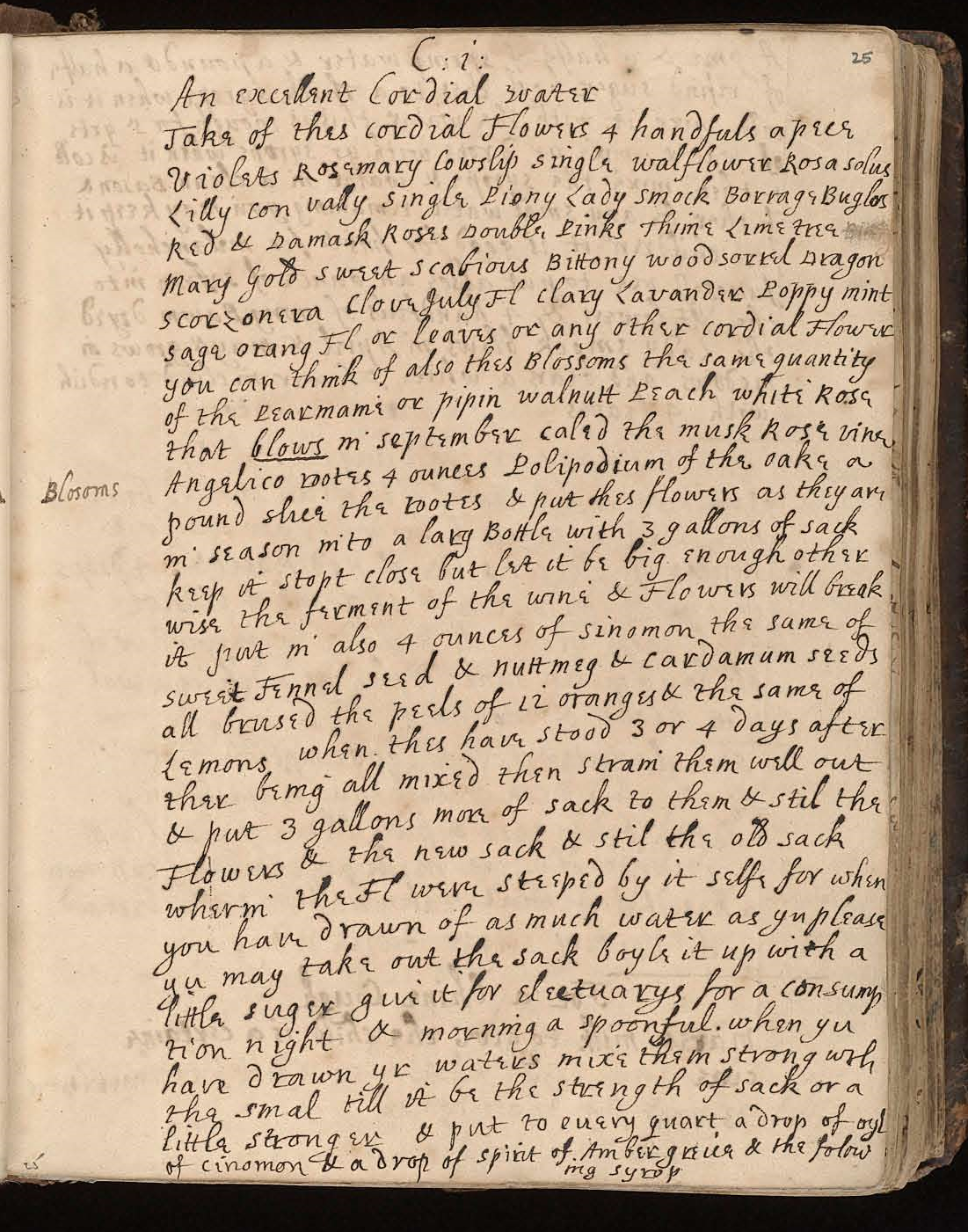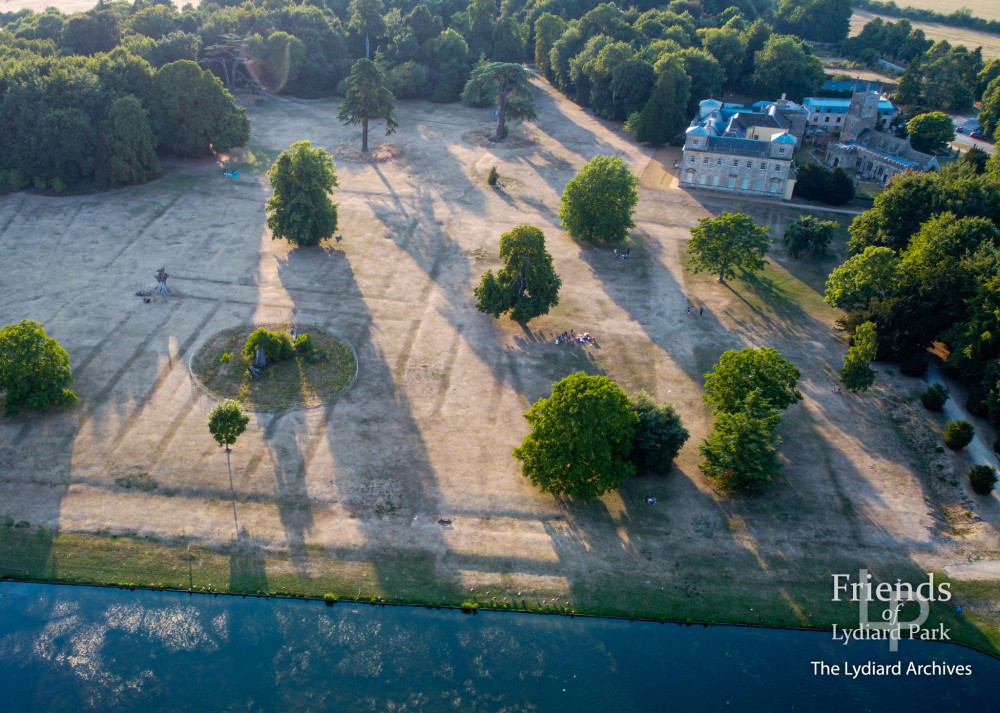


Johanna St. John (1631-1705) married her distant cousin, Sir Walter St. John, 3rd Baronet, around 1651. This marriage was not just a union of two individuals but a significant event that united the junior and senior branches of the St. John family, bringing a harmonious conclusion to the family division of the English Civil War. Sir Walter, leaning more towards the Parliamentarian side, had three elder brothers who had perished fighting for the King. On the other hand, Johanna, daughter of Sir Oliver St. John, Cromwell’s relative and Lord Chief Justice, was firmly in the Roundhead camp.
Like most country ladies of her time, Lady Johanna’s responsibilities extended beyond supporting her husband and bearing children. She administered to the health and wellbeing of the manor and its tenants, showcasing a profound knowledge of plants, herbs, and curatives, along with basic medical skills. Her legacy includes a vibrant collection of correspondence detailing her pharmaceutical and gardening activities, and a comprehensive “Receit Book” filled with recipes and recommendations for treating various ailments in both people and animals.

Lady Johanna’s recipe for Cordial Water; many of these ingredients would have been available in Lydiard’s gardens
Based near London in Battersea, Lord and Lady St. John often sent to their country residence at Lydiard Park in Wiltshire for fresh produce and specific curatives to treat family illnesses. Lydiard Park also served as a safe haven, away from the ill airs of London, where their children could recover from sickness. Lady Johanna’s letters reveal her meticulous supervision of the plantings in Lydiard’s extensive gardens to ensure a steady supply of essential herbs for her remedies.

Parchmarks revealing Lydiard Park’s 17thC formal gardens
Johanna’s expertise as a gardener and herbalist left behind a unique record of her work. She utilized plants from Lydiard’s formal gardens, which once stretched from the front of the medieval manor house down to the lake. For more exotic ingredients, such as unicorn horn and bezoar stones, she sourced from London apothecaries. Interestingly, the summer drought of 2022 revealed the lost gardens in parch marks, clearly outlining Johanna’s meticulous layout.
Lady Johanna’s correspondence provides a fascinating glimpse into the health and welfare practices of her time. Her letters discuss the ailments and treatments of those within her circle of family and friends, shedding light on the ingredients used in her curatives. Johanna St. John’s work as a knowledgeable gardener and herbalist stands as a testament to her dedication to the wellbeing of her family and community, and her legacy continues to be an intriguing part of Lydiard Park’s history.